
by Admin | Mon/Dec 2, 2019 | Uncategorized
Sweating is completely natural. When we feel hot, our body sweats. When sweat evaporates, it cools the body down. However, despite it being normal, it can be completely annoying especially for those of us who find themselves excessively sweating. Suffering from excessive sweating can also impact your confidence when the sweating strikes, which in turn creates stress which increases sweating, it is a vicious circle.
The good thing is there is hope. While we can’t stop the body from sweating, there are ways to reduce and deal with it. Here are some tips on how to deal with sweating.
Skip eating spicy food
If you are fond of eating hot peppers and other spicy delicacies, then it may be time for you to minimize your consumption, especially during lunch meetings. Eating spicy food can affect the amount of sweat your body produces, due to Capsaicin which stimulates the nerve receptors in your mouth, tricking your nervous system into thinking you are hot. You body then acts like 30+ C sending signal to your brain to activate your sweat glands to cool you down. Sweat then reaches your skin evaporates and taking the heat from your body with it.
Other than spicy food, eating onion and garlic can also increase your body odour. In garlics case the chemical you smell on your breath and skin is Sulphur. Sulphur compounds produce an unpleasant odour that as humans we have a low tolerance too. Garlic alone is not making us smell, as it is close relative onion from the alliaceous family can also produce pungent sweat. Other foods high in Sulphur and notorious odour producers also include cabbage, broccoli and brussels sprouts. If you are scheduled to attend business lunches, you may want to try avoiding these foods.
Up your hydration
Hydration is the easiest way to reduce perspiration. When your body is hydrated, it is better equipped to control your body temperature. Allowing your body to stay cooler for longer. This means drinking 8 glasses of water a day. When you are dehydrated your body will continue to perspire to expel fatty acids and other unwanted substances. There are millions of sweat glands in your body. Located in your armpits, apocrine glands are the most active of these glands.
These glands produce sweat that is high in fatty acids and proteins. These fatty acids combine with bacteria on your skin to produce the unpleasant odours associated with underarm sweat. This is also what creates the yellow stains on your shirts. The sweat by itself is odourless. So keep that water bottle handy and opt for some fruity snacks like strawberries and cucumbers that are up to 90% water to keep you hydrated.
Improve your diet
Like a car, your body runs smoother when it’s been properly maintained. High quality fuel, motor oil, regular oil changes keep your car from overheating, overworking and eventually breaking. Fruits and vegetable rich food high in B-Vitamins have a similar effect on your body. They help your body carry out critical metabolic functions and inter-nerve communication that keeps things running smoothly. When you don’t get these essential Vitamins your body has to work harder which can cause you to sweat more. So, fill your plate with whole grains, proteins and vegetables to keep that body operating at optimal levels.
Wear breathable fabrics.
Sometimes staying sweat-free can simply comes down to wearing the right clothing. If you sweat excessively, it is best to stick to clothes that are made from light breathable fabrics as well as avoiding tight fitted clothing. In the warmer months you may want to invest in a breathable undershirt to absorb sweat before it reaches the outer layer of your clothing. In the cooler months try adding a jacket or cardigan in a breathable material that may also help keep sweat from coming into view. Just be sure your layers are thin or appropriate to the season — you don’t want to feel overheated and worsen the problem.
The colours you wear can also affect the amount you sweat. Dark colours like navy and black and very light colours like white tend to hide wet stains the most effectively. It is best to avoid grey’s, blues, and bright colours as they tend to be the worst options for hiding sweat and will definitely show the world that you can’t stand the heat.
Besides colour and the number of layers you wear, you might also want to think about the materials you’re wearing. Technology has come a long way with it come to the textiles. Many technical fabrics can now allow better moisture wicking than cotton. Moisture wicking will not stop sweat, but will draw the moisture away from the body faster, increasing the evaporation process which in turn keeps you feeling cooler, drier and more comfortable.
Apply antiperspirant at night.
One of the biggest mistakes people make when it comes to antiperspirants is the timing.
Antiperspirants blocks the sweat ducts, preventing sweat to reach the surface of our skin. For it to work effectively, it is advised to apply it at night before bed. Most people apply it during the day, believing it would protect them from excessive sweating and body odour. However, during the day our bodies actively produces sweat. Unfortunately, the active ingredients in the antiperspirant used to reduce perspiration is removed by your daytime sweat.
Antiperspirants needs time to absorb into our body to work effectively. During the night our body produces less sweat thus allowing the active ingredients from the antiperspirant to be absorbed. This in turn lessens sweat production during the day. If you shower in the morning it is not a problem as the active ingredient should have already soaked in overnight and will still be effective.
Deodorants are different. They don’t prevent sweat but rather mask the smell produced by the bacteria when the body sweats. Please note some antiperspirants also contain deodorants.
Stress Less
While advising someone to stop stressing, it is often easier said than done.
People suffering from excessive sweating tend to stress a lot especially with their constant concern relating to visible sweat patches and body odour. Unfortunately, the more you stress about it, the more you sweat, stress increases the level of adrenaline response thus causing the body to sweat more. Look for ways to minimize your stress especially when it comes to work, if possible think mindfulness, meditation, and life balance, and when you’ve figured that out, please let us know.
While not always pleasant sweating is very natural, by watching your diet, staying hydrated and wearing comfortable clothing hopefully you can stay a little cooler and more comfortable this Summer. Enjoy the Sunshine : )
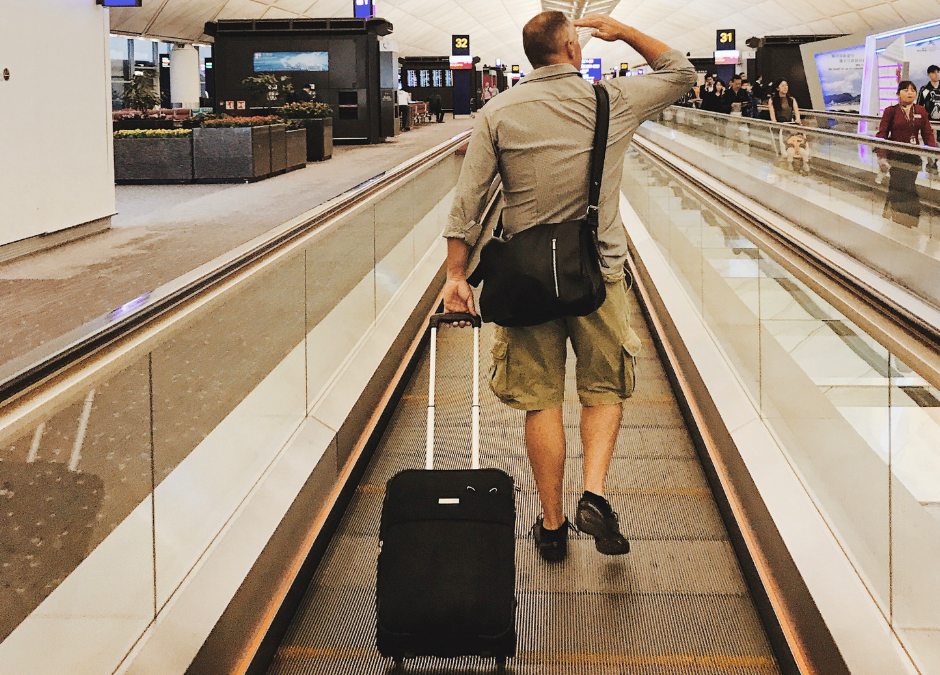
by Admin | Tue/Aug 6, 2019 | Uncategorized
Forget checking luggage; follow these 10 tips to become a carry on-packing superstar.
1. Have a “go-bag”
Prepare a bag with your regular requirements that needs minimal addition prior to travel. For example: Have a computer bag with a travel charger, HDMI cable, USB and phone charging cables prepacked and good to go. Add your laptop and walk out the door. For me, I keep a golf glove, a handful of tees and a few balls in a pocket of my suitcase to save buying new ones every time I get invited to play and am not prepared.
2. Toiletries – Double bag, prepack and downsize
Spills inside your suitcase can be a nightmare. To avoid, place all liquids and gels inside a plastic bag inside either another plastic bag or your toiletries bag. Opting for travel size toiletries will also save you loads of space. Keep a travel-only toiletry bag that has duplicates of everything you need including a spare toothbrush. If you are a spray deodorant kind of guy, consider a roll on for travel times only, saving valuable time at the security checkpoints.
3. Wrinkle-free fabrics do matter
Inevitably, your suitcase will get tossed about while travelling and the contents will move and get creased. Investing in the right shirt will ensure you can look sharp, straight out of the suitcase. John Miles shirt collection are designed specifically with travel in mind, pull them out, shake twice and put on. It is that simple.
4. Laundry Bags, keep a spare
Stash an empty, lightweight bag inside your suitcase for any dirty laundry and if you forget you will often find fabric drawstring laundry bags at most high-end hotel rooms or a plastic one at middle range hotels. Pack on top of suitcase for separation then squish down to close.
5. Place shoes foot-to-toe in the bottom of your suitcase
Heavy items, like shoes, should be placed at the bottom of your suitcase near the wheels. This saves space and makes sure that your suitcase is properly balanced. Put softer items on top as they will squish down easier, meaning less broken zips! It also means your bag will have an easier time compressing into the overhead bins.
6. Pack your socks in their natural environment
Don’t waste the valuable space inside your shoes. Put rolled-up socks inside the dress shoes and sneakers you are most likely to wear them with, this will also help to preserve their shape inside your suitcase.
7. Bag your soles
Use a shoe bag / laundry bag / plastic bag to prevent the dirt on your shoes from touching the other items in your suitcase, keeping the inside of your bag nice and clean.
8. Organise your tech kit
Once you have your electronics all set, minimize the cables and chargers. Let’s face it, our life is merely walking between charging stations, so carry an external battery pack for phone and small electronics, an extra USB for a rental car. Chose a lightweight universal power board to avoid multiple plugs and adapters. Use a sunglasses case to store cords, earbuds, and chargers, and to prevent annoying tangles. Have your laptop easily accessible / removable for the security scanning point
9. Invest in noise cancelling headphones
A good set of earphones makes planes so much more comfortable. Keep your sanity and listen to something of your choice!
10. Wear Your Bulkiest Items
If you are heading somewhere chilly and will need a jacket or a sweater, don’t try squeezing it in your suitcase as it will take-up half your luggage, just wear it and save space.
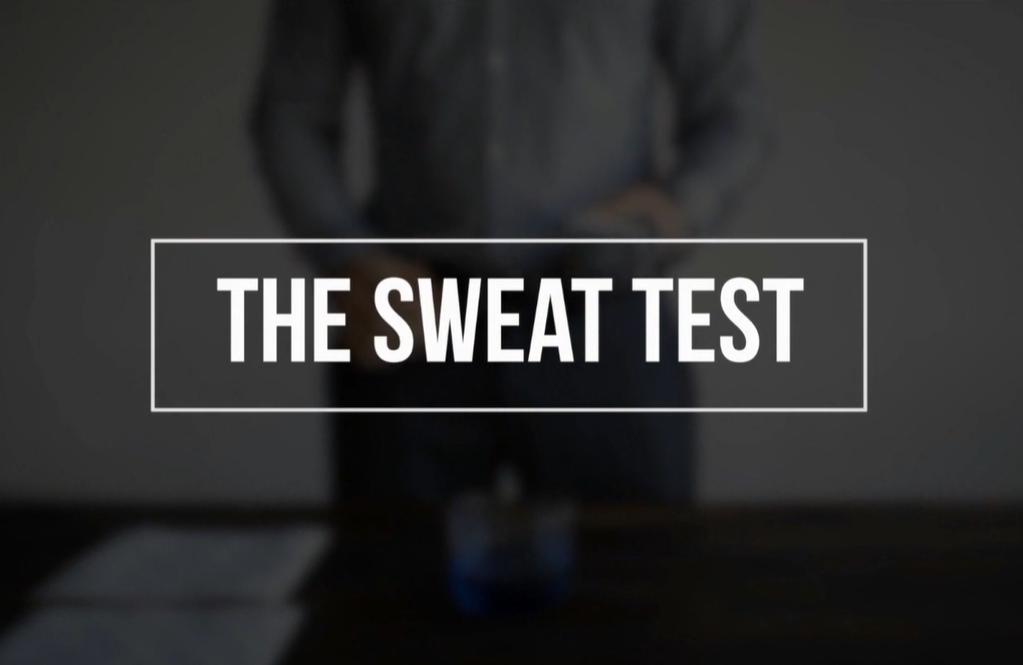
by Admin | Thu/Jul 18, 2019 | Uncategorized
Dark armpit patches, damp back circles from sitting, hot under the collar from having to present to the board….
Sweating completely natural and an essential way to keep our body temperature regulated and to keep us from overheating. But it isn’t pretty and there is no sugar coating it.
Every day, you face stress, heat and movement, you are going to sweat. While natural fibres are considered breathable, they also do a great job of retaining moisture and are unable to stand up to high pressure situations. In 2017 John Miles set out on a mission to create a professional looking, moisture wicking dress shirt. Cotton dress shirts are a thing of the past, the future of dress shirts is here!
Wicking Fabric, Who Invented It?
Wicking fabric was believed to have been first invented by Robert Kasdan (New York, N.Y.) and Stanley Kornblum (Monmouth Junction, N.J.) They found that a synthetic knit fabric made up of micro-fibre yarn that had wicking properties. The patent for this technology was filed on July 31, 1998. However in 1996, Kevin Plank who later founded Under Armour, is believed to have been the first person to mass market moisture wicking fabrics while he was at the University of Maryland. This fabric would not prevent you from sweating but was designed to minimise the impact of sweat and help athletes perform once sweating began.
How does it work?
Just like a candle draws wax up the wick to the flame, moisture wicking fabric pulls moisture from the body to the exterior of the shirt where the moisture can evaporate more easily. These specialised fabrics are made from polyester and or polyester blends and are quick drying and do not retain moisture like cotton or other natural fabrics.
Although these dress shirts are not going to stop you from sweating, they will defend you against the visible patches and damp, so you carry on with your day with supreme comfort and top performance.
If you are one of the millions of guys out there that are currently wearing a dress shirt that is not performing at the level you deserve, then it is time to upgrade your dress shirt game and check out John Miles dress shirts.
by Admin | Thu/Jun 13, 2019 | Uncategorized
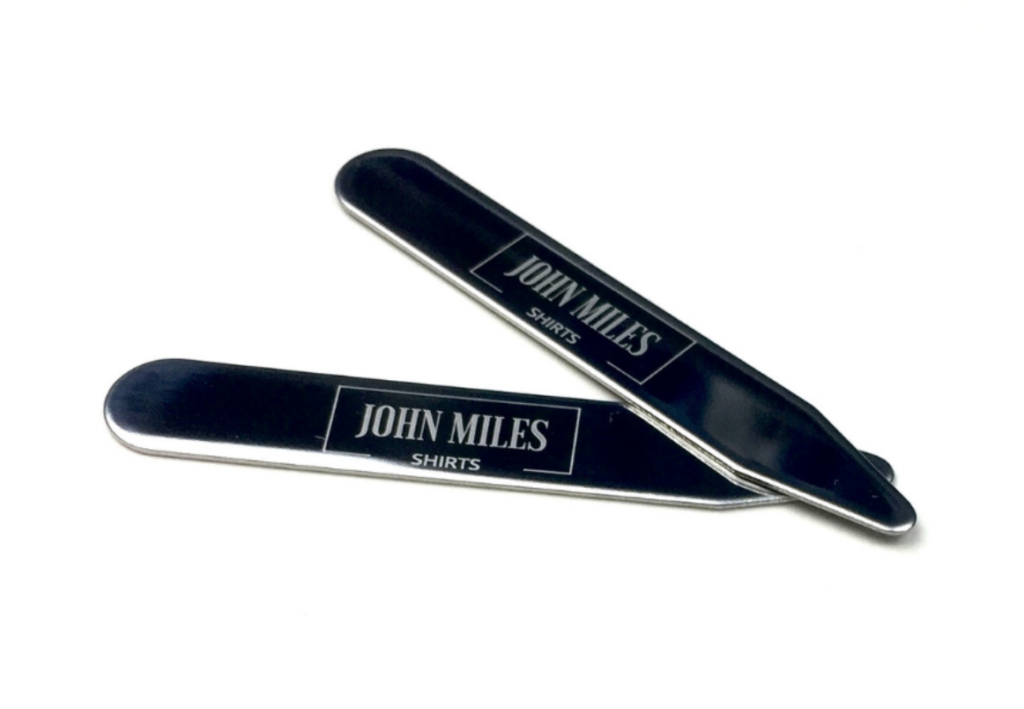
Collar Stays
Accessories are a staple to many a male wardrobe. A collection of cravats, ties, pocket squares and cufflinks. Accessories like these can be conversation starters and add personality to your look. However, there are also accessories that work behind the scenes, like collar stays. Though not as visible as ties or pocket squares, they elevate your look by keeping your collar crisp and sharp. Usually made of plastic or metal, collar stays are small pieces of hardened material that can be either sewn or inserted into special pockets on the undersides of dress shirt collars. Collar stays give your collar just the right amount of weight so that it pops and sits right. Sharp collar points are a mark of sophistication, whether you’re a collar stay beginner or an expert at keeping your collar in place, everyone can appreciate these small accessories for their utility and their functionality.
History
Sharp collar points have been symbol of sophistication since the late eighteenth century. During this time, men used detachable collars to make their casual shirts more formal. These detachable collars would be starched to keep their shape, but eventually, starched collars were deemed a little too stiff, and the collar stay was born. Before the invention of plastic, collar stays were made of varying metals and rare woods. Today, you can find collar stays that are made of pretty much anything. It’s all about finding the material and shape that reflect you and your shirt wearing style.
Types
If you purchase your dress shirts from higher-end stores, collar stays should be included. Often you will buy shirts and collar stays separately, particularly when purchasing replacement sets. When choosing your collar stays, consider the shape and width of the collar of the shirt or shirts you plan to wear them with. If your shirt’s collar is pointed, you will want to choose a pointed collar stay, while if your shirt’s collar is rounded, you will want to choose a rounded collar stay.
You can find collar stays that are made out of a variety of materials. For most men, it’s a personal choice, so we suggest finding your own preference and style. The four most common materials for collar stays are plastic, stainless steel, brass, and gold, but if you looked hard enough, you could find collar stays made out of even rarer materials.
Plastic
Plastic collar stays are much lighter than their metal counterparts. However, they may not always work effectively because lightness can also mean floppiness. They are inexpensive and easy to find, though, so if you are a collar stay beginner, starting out with a plastic set may be a good, low-commitment option.

Stainless Steel
As far as metal collar stays go, stainless steel sets are the most popular choice. Stainless steel is sleek and heavy enough to keep your collar looking crisp without weighing you down. This option is elegant, but not too hard on your wallet. Also rust proof, non-corrosive and small enough to avoid setting of the metal detectors when travelling. Check out the link below to see our new range of metal collar stays –

Brass
Brass collar stays are also a popular, budget-friendly choice among men who prefer metal. Brass stays boast similar qualities to stainless steel stays, but look just a bit more classic, especially in a burnished or polished finish.
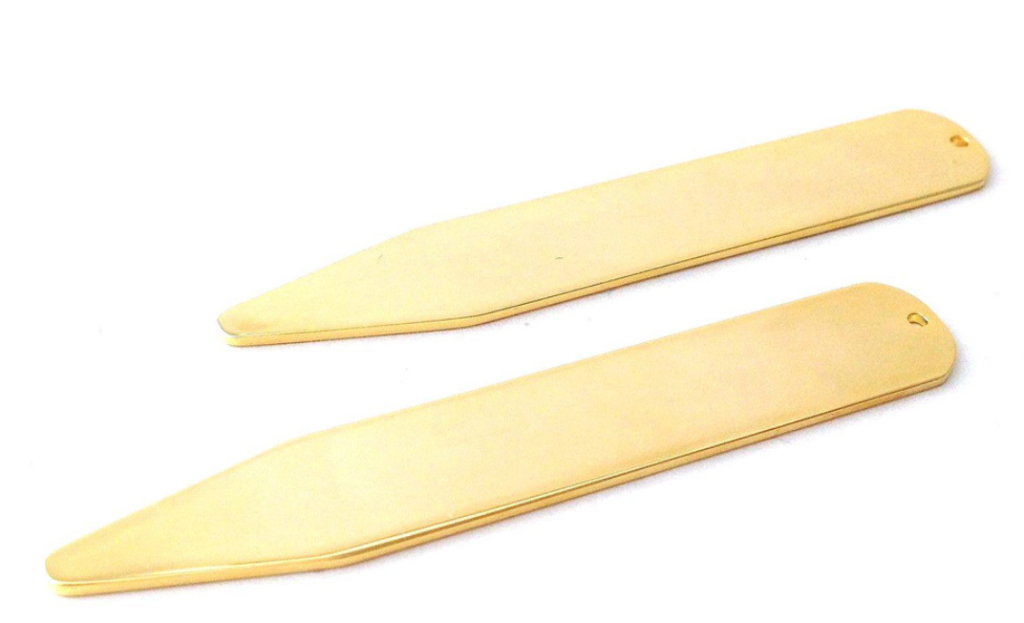
Gold
Collar stays made out of gold are the most expensive of the common varieties, they are also arguably the most sophisticated. These stays are definitely an investment, so be sure that collar stays fit your style before you add these to your shopping list.
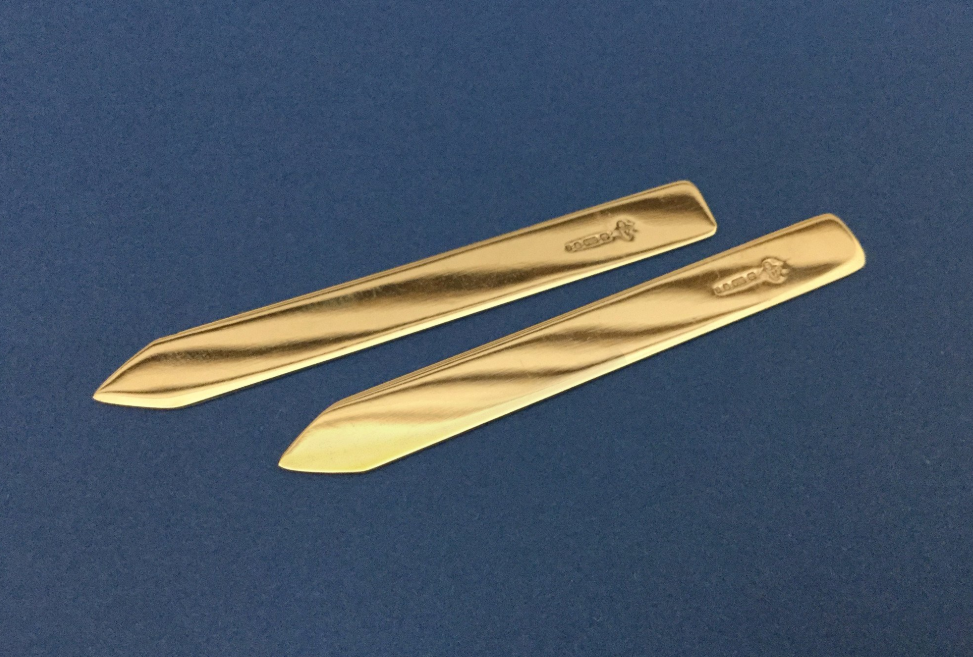
Other Materials
This is for all the accessory pros who wish to include a unique collar stays in their collection. It might take a little searching, but you’ll be able to find stays made out of more rare materials. Stays created from animal products, precious metals, and heavy paper are all interesting choices that that add a little personal taste to your accessory arsenal.
Looking after your Collar Stays
It is recommended that you remove your Collar Stay before laundering your shirts This is important as wash cycles or dry-cleaning procedures can easily ruin collar stays, or damage your shirt so be sure to remove them before washing. If your shirt has stays sewn in, fear not. Those stays have been made to withstand the cleaning process.
Emergency Collar Stays
Need to look refined in a pinch but don’t have collar stays on hand? Make some! Just look for any sturdy material with rounded or pointed edges that can be folded or cut to fit inside the small collar pockets. Ideas include old credit cards, business cards or any heavy weight card.
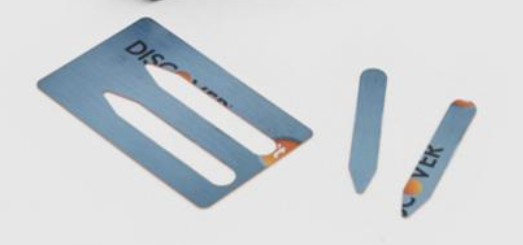
Collar stays are small, but mighty. Simply sliding them into your dress shirt collar can take your look to the next level, giving your ensemble an extra element of refinement. With the sheer variety of sizes, shapes, and materials out there, it’s easy to find a set of stays that fits your style.








